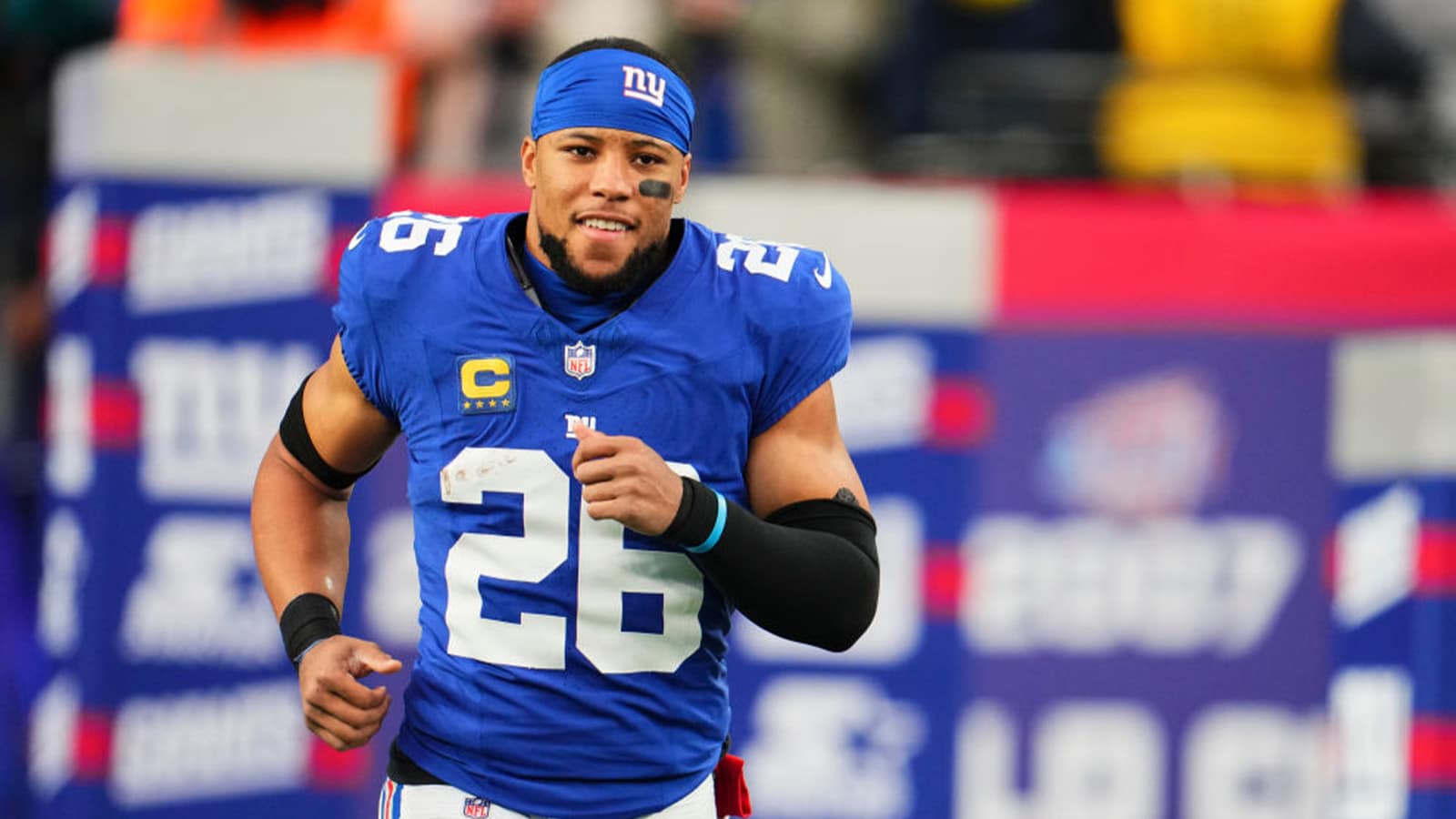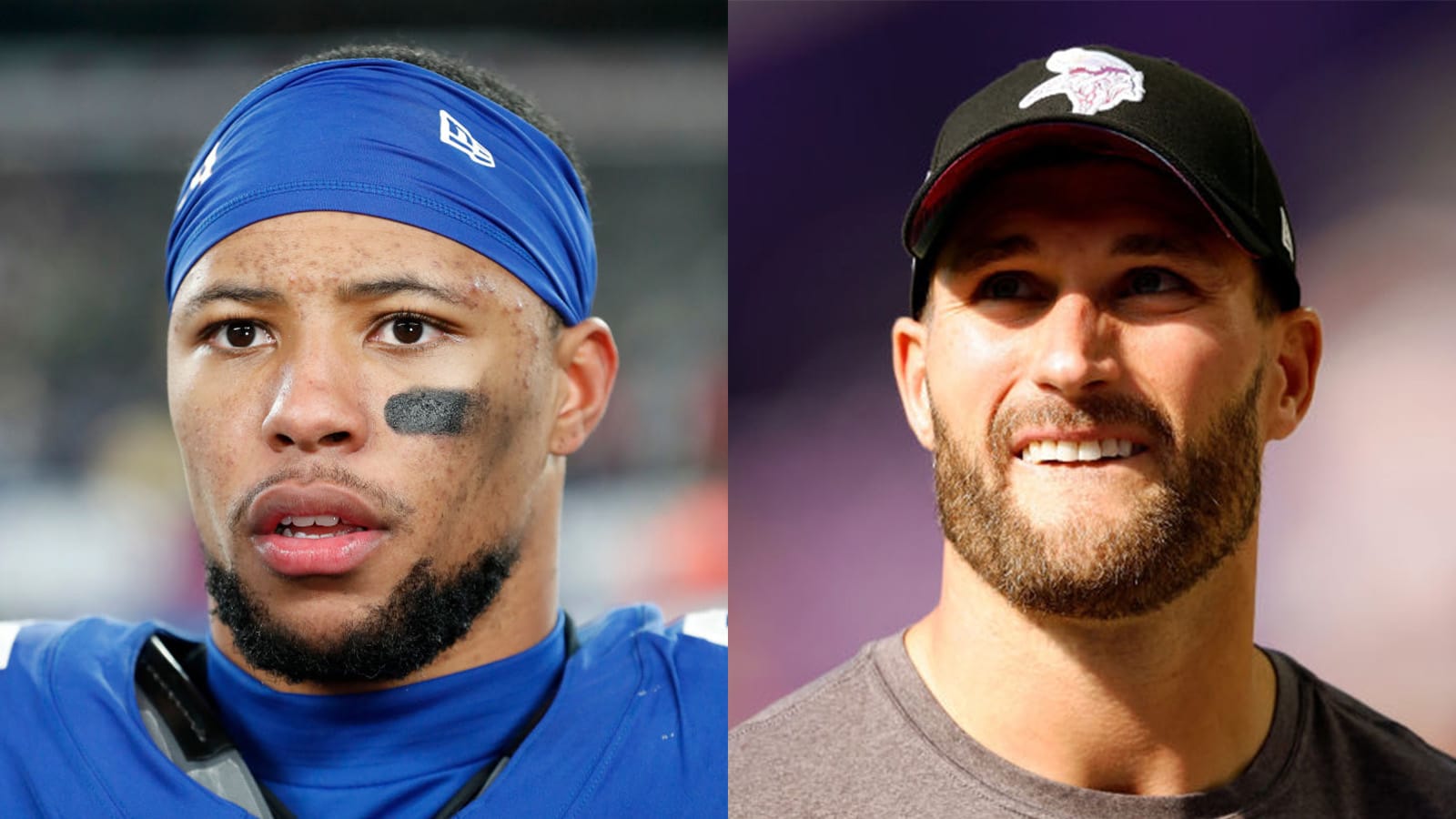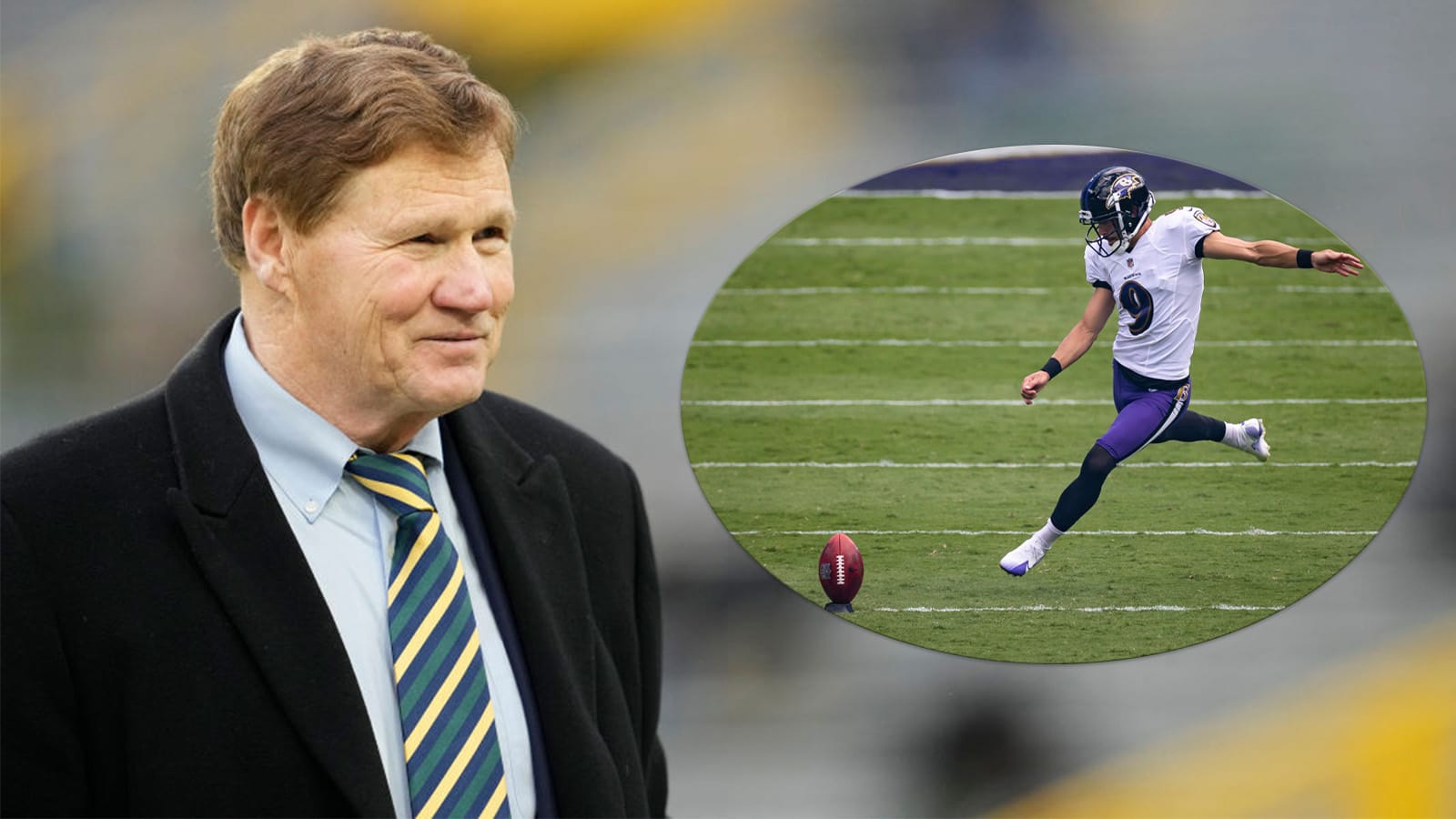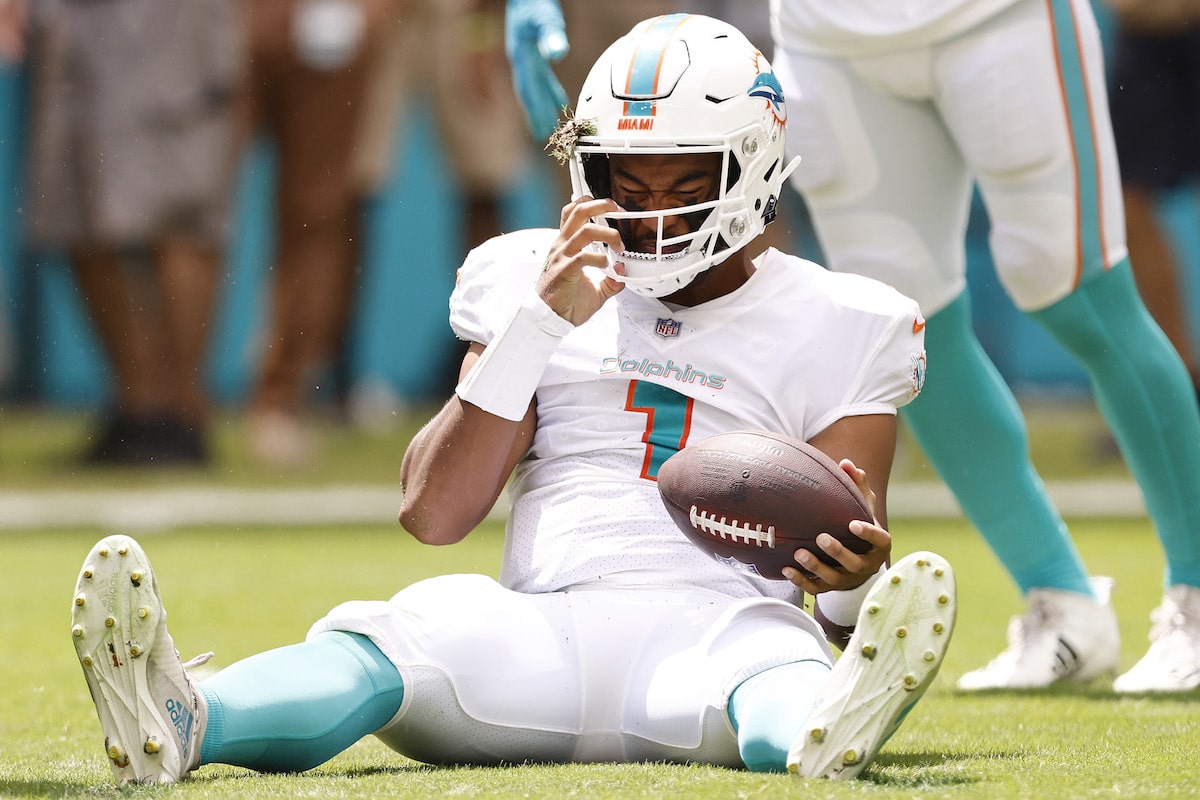
Tua Tagovailoa Experienced the ‘Worst Thing Imaginable’ for an NFL Player’s Brain After His Concussion
Football has been under intense scrutiny for players’ risk of concussion at every practice and game. Is the possible chance of permanent brain damage worth the fame and glory of the NFL? Tua Tagovailoa is facing the repercussions of a concussion and the controversy surrounding his injury.
Tua Tagovailoa suffered what could have been a fatal concussion
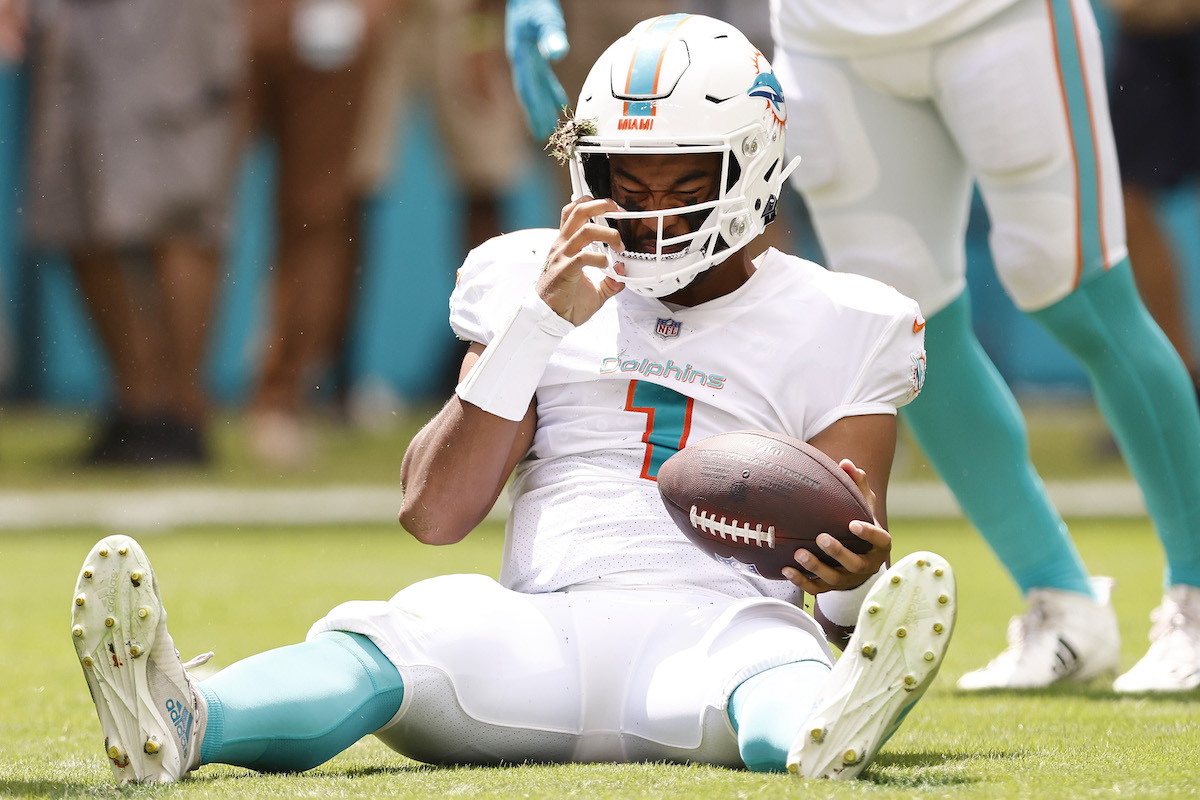
In the Miami Dolphins’ Week 3 game against the Buffalo Bills, Tagovailoa hit his head on the turf and then struggled to walk. Medical staff evaluated the quarterback for a concussion. The present attendants said Tagovailoa cleared the concussion protocol and could play in the second half of the game. A back injury was blamed for the fall, but many experts doubted that story.
Just four days later, Tagovailoa suffered a concussion during a game against the Cincinnati Bengals. This time, the 24-year-old could not walk off the field, instead being carried off on a stretcher to an ambulance. That is the possibility of two concussions in the span of five days — the kind of brain injury that could kill a person.
According to Yahoo News, Tagovailoa’s fingers stiffened into unnatural positions when he hit the ground after his Week 4 injury. Chris Nowinski, a neurologist and concussion expert, said that Tagovailoa showed “decorticate posturing”, a severe “primitive” response indicating damage to the cerebral cortex. Nowinski also said, “You usually see it in stroke when you’ve had massive damage to the cortex … It’s basically like a primitive movement controlled by the brain stem.”
Famed neuropathologist, Dr. Bennet Omalu, said Tagovailoa should not take another hit to the head and needs to retire from the NFL, according to Fox News. Dr. Omalu said, “If you love your life, if you love your family, you love your kids — if you have kids — it’s time to gallantly walk away … Go find something else to do.”
The NFL Player’s Association fired the independent neurotrauma consultant involved in Tagovailoa receiving clearance to play after his Week 3 injury. SI reports that Tagovailoa “cleared concussion protocol and returned to the game, but there has since been questioning surrounding his evaluation, with many questioning the decision to allow him back in the game.”
The investigation into what happened to Tagovailoa is still ongoing and his return to football is unknown.
Subsequent concussions are particularly bad for NFL players
According to the National Center For Health Research, “Concussions occur when a collision causes the brain to hit the inside of the skull. The greater the force of impact, the more severe the concussion. Symptoms can include disorientation, memory problems, headaches, fogginess, and loss of consciousness.”
Interestingly, once someone has suffered one concussion there is an increased risk of experiencing a second brain injury. The symptoms of the second injury will often last longer than the initial injury. As The Athletic reports, “The worst thing imaginable, from the neurological perspective, is for a person to sustain another concussion while still recovering from the first.”
Repeated head injuries cause a serious brain injury called chronic traumatic encephalopathy (CTE). Brain changes can progress and worsen over time. CTE is a major concern for professional football players because they risk multiple brain injuries.
CTE can cause memory loss, impaired judgment, aggression, and depression. There have even been cases of suicide among professional athletes diagnosed with CTE.
The NFL has a history of severely injured players
According to Sportskeeda, the average retirement age for an NFL player is 27 years old. Most have the rest of their lives to pursue other interests. Unfortunately, too many NFL players do not experience the fullness of a happy retirement due to their injuries while playing football.
Chronic CTE is a known problem in the NFL. It’s been cited as a cause of why players have died either during their NFL career or after. Sadly, it has also been noted as a cause of multiple suicides. Here are five former NFL players — found to have CTE during autopsies — who took their own lives:
- Phillip Adams (San Francisco 49ers)
- Junior Seau (San Diego Chargers)
- Jovan Belcher (Kansas City Chiefs)
- Aaron Hernandez (New England Patriots)
- Kenny McKinley (Denver Broncos)
